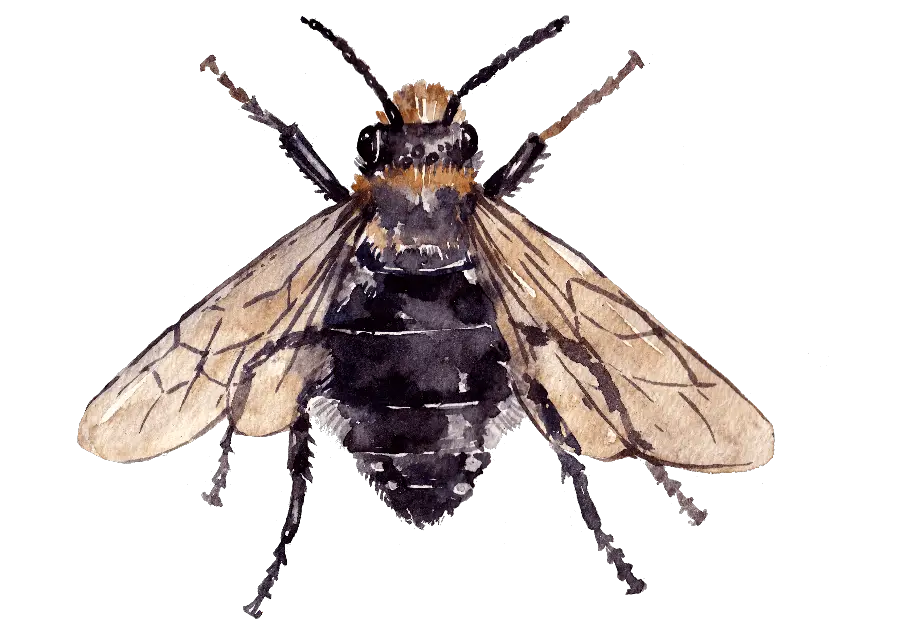Last updated on January 4th, 2024 at 02:21 pm
The world of bees is filled with wonder, and among the myriad of species, the Mourning Bee, or Melecta Albifrons, holds its own unique place. With its distinct appearance and behaviour, this bee is a marvel to observe. In this guide, we’ll explore the captivating world of the Mourning Bee, aiding you in identifying and understanding this remarkable species.
1. Appearance: Unveiling the Mourning Bee
- Body: The Mourning Bee is medium-sized, with females typically measuring 10-15mm and males slightly smaller.
- Colour: They sport a predominantly black body, but what sets them apart are the white or pale hair patches on their abdomen, giving them a ‘mourning’ appearance.
- Wings: Their wings have a slightly smoky tint, complementing their dark body.
2. Habitat: The Mourning Bee’s Domain
- Location: Predominantly found across Europe, they have a notable presence in the UK.
- Nesting: Unlike many bees, Mourning Bees don’t build their own nests. They’re cleptoparasites, meaning they lay their eggs in the nests of other bees, particularly the Hairy-footed Flower Bee.
- Environment: They’re versatile in their habitat choice, ranging from gardens to meadows and woodland clearings.
3. Behavior: The Unique Lifestyle of the Mourning Bee
- Parasitic Nature: As cleptoparasites, once their eggs hatch, the Mourning Bee larvae consume the host bee’s pollen stores and larvae.
- Activity: They’re diurnal, with most of their activity happening during the day.
- Flight: Their flight is swift and slightly erratic, often hovering near the ground.
4. Diet: Sustenance for the Mourning Bee
- Nectar: While they don’t collect pollen due to their parasitic nature, they do feed on nectar from various flowers for energy.
- Pollen: They don’t consume pollen as adults, but their larvae feed on the pollen stores of their host bee.
| Preferred Flowers | Blooming Period |
|---|---|
| Dead-nettles | Spring |
| Vetches | Spring – Summer |
| Lungwort | Spring |
5. When to Observe the Mourning Bee
- Season: The best time to spot them is during the spring months, particularly from April to June.
- Time of Day: Being diurnal, they’re most active during daylight hours, especially on warmer days.
6. Popularity and Distribution
- Europe: Widely distributed across Europe, they’re especially prevalent in the UK.
- Asia: There are some sightings in parts of Asia, but they’re predominantly a European species.
Conclusion
The Mourning Bee, with its parasitic lifestyle and distinctive appearance, is a testament to the diverse and intricate world of bees.
Don’t hesitate to visit our bee identification chart for more insights into different species and how to spot them.





